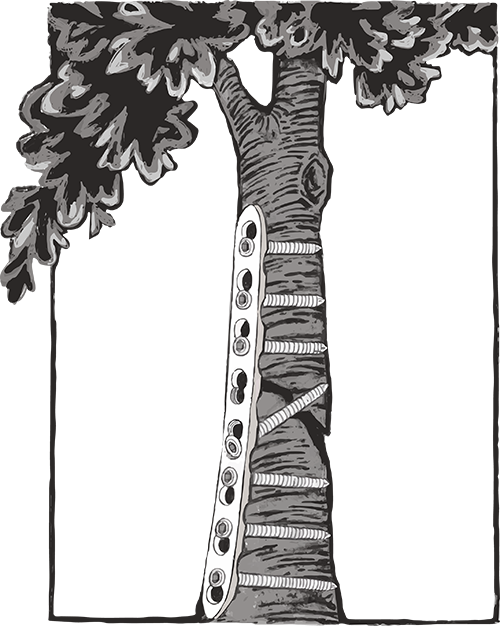TRAUMAPLATFORM IS PROUD TO SUPPORT THESE RESEARCH PROJECTS:
Artificial Intelligence - Prediction Tool
This prediction tool allows you to calculate the risk of an associated posterior malleolar fracture in patients with tibia shaft fractures.
This prediction tool is for educational purposes only.
David Langerhuizen
Co-authors: M. Bergsma, C.A. Selles, R.L. Jaarsma, J.C. Goslings, N.W.L. Schep, J.N. Doornberg
Diagnosis of Dorsal Screw Penetration after Volar Plating of the Distal Radius: Intra-Operative Dorsal Tangential Views versus Three-Dimensional Fluoroscopy
Measurements were obtained by following these steps: 1) The axial, sagittal and coronal planes were adjusted parallel to the distal angular stable screw. 2) On the axial plane, we measured the total length of the dorsal penetrating screw from screw head to screw tip. 3) We constructed a line at each side of the penetrating screw. 4) By measuring the distance from the screw tip to the constructed line, we determined the penetration distance from the screw tip to the dorsal cortex
Minke Bergsma
Collaborators: J.N. Doornberg, R.L. Jaarsma, G.I. Bain
The Effect of Training: The Dorsal Tangential View (Lleyton Hewitt View)
We have created a video training video of the Dorsal Tangential View (in South Australia coined as the Lleyton Hewitt View, after the signature move of the world-famous tennis player). This training is given by a senior expert upper limb trauma surgeon and includes a discussion on the anatomy of the distal radius, the limitations of conventional anteroposterior/lateral views and the purpose, execution, and interpretation of the DTV. Training 13 observers with this video showed improved diagnostic accuracy, significantly improved interobserver reliability for the decision of screw exchange and significantly improved confidence levels of performing and interpreting the view for the Dorsal Tangential View after training as compared to before training.
Martin Haan
Co-authors: L. Blankevoort, K.T. Lambers, R. Blom, I.N. Sierevelt, G. Tuijthof, G.M.M.J. Kerkhoffs, J.N. Doornberg
Dynamic Computed-Tomographic Assessment of the Ankle Syndesmosis: Reliability of Imaging Technique
Recent studies on fixation of syndesmotic injuries associated with rotational type ankle fractures suggest that the clinical paradigm may be shifting towards dynamic fixation of the ankle syndesmosis. However, knowledge of dynamic properties of the syndesmosis in vivo is limited. The objective of this study is to evaluate the reliability of dynamic –in vivo– computed-tomography (CT) assessment of the ankle syndesmosis. Patients: Twelve subjects with a clinical history of ankle instability, but without suspected syndesmotic injury. Intervention: CT-scans of one ankle in neutral and four extreme positions (dorsiflexion with/without eversion, plantarflexion with/without inversion) using a CT-compatible loading platform. Custom axial slices were created from each scan. Main outcome measures: Previously validated CT-measurements were used to quantify the geometric dimensions of the syndesmosis in the various positions: length of the incisura (LI), fibular length (FL), sagittal translation of the fibula (ST), tibiofibular clear space (TFCS), anterior/posterior widths of the syndesmosis (AW, PW) and fibular orientation. Statistical analysis: Intra- and inter-observer reliability was calculated using intraclass correlation-coefficient (ICC). Additionally, smallest detectable change (SDC; minimal displacement that ensures displacement is not result of measurement error) was calculated. Results: All measurements revealed excellent intra-observer ICC (range 0.89-0.98). Inter-observer ICCs were good to excellent (range 0.63-0.97). Upon ankle movement, CT- measurements showed significant displacement from neutral position to each extreme position (ΔTFCS, ΔST, ΔTFCS, ΔAW, ΔPW), all larger than their respective SDCs. Conclusions: Dynamic CT assessment and quantification of motion in the horizontal plane of the ankle syndesmosis is a clinically reliable technique.


